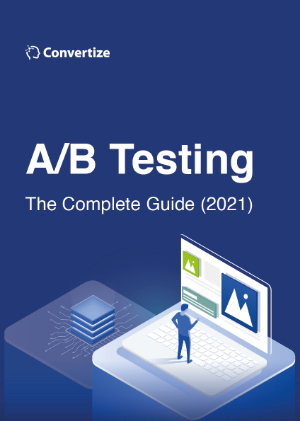

In the end both groups should have a similar rate of rejecting cookies/tracking.Īnother option I was thinking about is using a Poisson rate model with using the base case as a kind of “clock”. One option might be to simply ignore the fact that I can only track a fraction of the overall users who saw my versions. I was wondering how a PyMC3 model would look like if I can only track the successful conversions (every user who bought something)? The article Simple Sequential A/B Testing describes an approach from a frequentist viewpoint. In that case you will not know about all users who saw your versions, but you will know about all successful conversions, because the user will have bought something. Imagine the case where you need the GDPR consent for users to be tracked. "Statistical Methods in Online A/B Testing" by the author of this glossary, Georgi Georgiev.There are good articles about bayesian A/B testing with PyMC3 like What is A/B testing or Bayesian A/B Testing in PyMC3, but these typically assume that you can track all users who see your version A and B. Like this glossary entry? For an in-depth and comprehensive reading on A/B testing stats, check out the book For most cases there exist near-unbiased estimators with good properties. The bias-reduction methods are closely linked to the type of spending functions employed.
#Sequential testing ab testing trial
Crossing one of the boundaries results in stopping the trial with a decision to reject or to accept the null hypothesis. The boundaries can be maintained even when one deviates from the original design in terms of number and timings of interim analyses. The two functions produce two decision boundaries, an efficacy boundary limiting the test statistic ( z score) from above and a futility boundary limiting it from below.

The control of type I errors is achieved by way of an alpha-spending function while control of the type II error rate is handled by a beta-spending function. This also introduces bias and requires the use of bias-reducing / bias-correcting techniques as the sample mean is no longer the maximum likelihood estimate. Implementing a winning variant as quickly as possible is desirable and so is stopping a test which has little chance of demonstrating an effect or is in fact actively harming the users exposed to the treatment.Ī drawback is the increased computational complexity since the stopping time itself is now a random variable and needs to be accounted for in an adequate statistical model in order to draw valid conclusions. The added flexibility in the form of the ability to analyze the data as it gathers is also highly desirable as a form of reducing business risk and of opportunity costs.

For example, one can cut down test duration / sample size by 20-80% (see article references) while maintaining error probability. The benefits of a sequential testing approach is the improved efficiency of the test. They can also be performed by using an adaptive sequential design when necessary, although it offers no efficiency improvements and are much more complex. Sequential testing is usually done by using a so-called group-sequential design (GSD) and sometimes such tests are called group-sequential trials (GST) or group-sequential tests. This should not be mistaken with unaccounted peeking at the data with intent to stop. Sequential testing employs optional stopping rules ( error-spending functions) that guarantee the overall type I error rate of the procedure. Sequential testing is the practice of making decision during an A/B test by sequentially monitoring the data as it accrues. Aliases: sequential monitoring, group-sequential design, GSD, GST


 0 kommentar(er)
0 kommentar(er)
